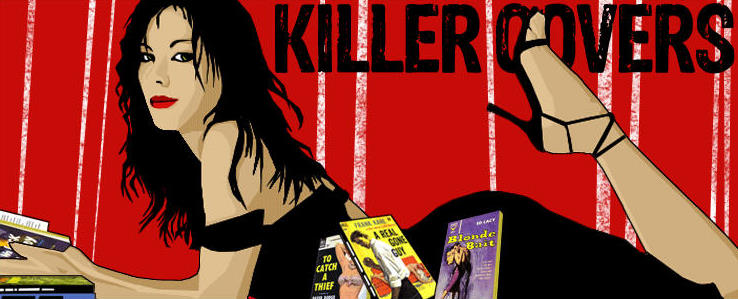
According to an obituary in The New York Times, Harry Olesker received a master’s degree from Columbia University before serving in Army Intelligence during World War II. “He began his career as a radio script writer for station WOR [now WWOR-TV], and later was a television producer for the National Broadcasting Company and the Columbia Broadcasting System,” the newspaper explained. In early 1958, Olesker saw his first novel published, Now, Will You Try for Murder?, which Times critic Anthony Boucher called “the liveliest, brightest and most satisfactory professional ‘American first’ I’ve read in many years.” Boucher went on to say:
Even as a twenty-first novel, this would still be cause for rejoicing. TV writer-producer Olesker has written the most informed and credible of the many TV-murder novels, and he has brought off the rare trick of providing his murderer (as did Cyril Hare in “An English Murder”) with a motive that would not be operative in any other milieu. He successfully blends fast action, humor and lighthearted sex with a strict detective puzzle, and creates, in publicity man Peter Brand and Captain Albert Felder of Manhattan Homicide, two sleuths whom we want to meet soon again. Only one question remains unanswered in this definitive study of TV quiz shows: Will you try for the jackpot, Mr. Olesker, and tell us what Manhattan Homicide is doing in a murder on Long Island?Boucher wasn’t the only one impressed by Olesker’s work. Not long after his book’s publication, the author was invited to adapt his tale as an episode of the hour-long, small-screen anthology series Kraft Television Theatre. The Web site TV.com describes the story’s plot this way: “Set behind the scenes of a television game show, a hugely successful contestant is found murdered. It just happens to be the day he was scheduled to try for the $160,000 jackpot.” Since both the book and teleplay followed closely on the decade’s TV quiz show scandals, they could have been predicted to excite public interest.
 In 1959, Now, Will You Try for Murder? was nominated for the Edgar Allan Poe Award for Best First Novel, but lost out in the end to The Bright Road to Fear, by Richard Martin Stern. That same year saw the publication of Olesker’s sophomore work of fiction, Exit Dying, about which pseudonymous blogger Utter Scoundrel writes:
In 1959, Now, Will You Try for Murder? was nominated for the Edgar Allan Poe Award for Best First Novel, but lost out in the end to The Bright Road to Fear, by Richard Martin Stern. That same year saw the publication of Olesker’s sophomore work of fiction, Exit Dying, about which pseudonymous blogger Utter Scoundrel writes:Poor Dottie Dawn. She moved from Nowheresville, Wyoming, to the Big Apple to become a Broadway star. Five weeks of hard luck lead her to a loused-up audition, a drink-fueled night on the town with a gadabout producer, and then several hours later she’s alone in his apartment in her birthday suit. A quick rifle through his closets to find some replacement clothes leads to the discovery of a body instead. Oops.Olesker would see one more of his detective novels published: Impact, which came out in hardcover in 1961. But as his Times obit recalls, “From 1963 to 1968 he directed radio and television film production for the American Cancer Society.” He never had another opportunity to shine as a novelist. In April 1969, Harry Olesker died “when his motorcycle and an automobile collided” in the Long Island, New York, town of Roslyn. He was only 46 years old.
This was a refreshing oddity out of the crime fiction of the ’50s and ’60s (or I haven’t read that many, which seems impossible at this point)--the first-person narrative is [delivered by] the small-town actress with absolutely no crime-fighting skills whatsoever. It defies the reader’s expectation off the bat by being not only humorous (murders notwithstanding) but very clever.
After reporting the crime, Dottie is free to go. Anywhere, actually. Her lunkhead Wyoming fiancé of three years shows up on her doorstep early on and she could have easily gone back with him, but instead chooses to stay around and stick her cute nose into places where it could easily get shot off. And for her coup de grace, she solves the mystery in the presence of a more qualified police detective while still incredibly tipsy on two-and-a-half Gibsons. Ha ha!
* * *
In case you’re wondering, the two book covers shown here feature illustrations by classic paperback artist Robert McGinnis.





2 comments:
COol!
It is written that Dag Hammarskjold read thia book on the Albertina DC6 which crashed 17 sept 1961 in Rhodsia.
call me
borje.steenberg@gmail.com
Post a Comment